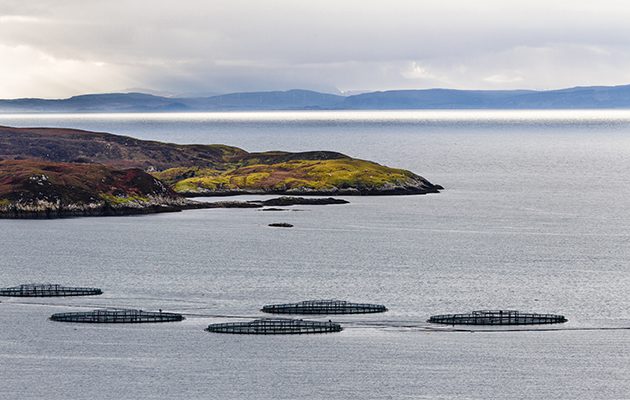Farmed fish now equals wild supplies, says Tim Field, with one initiative off Cornwall showing how wild stock enhancement can play a vital role in sustainable food production
Globally we now consume as much farmed as wild fish. But there is an initiative in Cornwall showing how wild stock enhancement can aid sustainable seafood production, says Tim Field.
For an initiative that you can get involved in read employing citizen science, to find out how you can play a part in gathering big-data for analysis.
SUSTAINABLE SEAFOOD PRODUCTION
The Food and Drink Federation has announced that this year’s salmon exports have grown by more than 50% in value to £186.7 million, topping the UK food export list – the result of a combination of greater promotion abroad and the weakening pound. This news will please Scotland’s aquaculture industry, particularly off the back of plans announced last year to double production from £1.8 billion to £3.6 billion by 2030. While excellent for the big business of salmon farming, it will raise concerns among environmentalists and fishermen. The conflict with disease, parasites and the wider ecosystem makes salmon farming a dirty word in some circles. As with all farming systems, some are better than others – and it may come as no surprise that I would say the organic label would go some way to differentiate the former from the latter – but given this is a relatively young (by farming standards) industry, there remains plenty of scope for the quality and sustainability of all salmon production to improve.
Globally, we now consume as much farmed as wild fish and in a bid to nourish the billions while protecting our wild stocks from over fishing, aquaculture inevitably plays a role in sustainable food production. However, there remains a need to think outside the box so we can long enjoy the entire aquatic environment for its larder, amenity and ecosystem function. It seems one such novel approach to conserving and cropping our wild coast has been achieved by the clever and ambitious fishermen and researchers around Padstow, led by the National Lobster Hatchery. On this gem of a coastline in North Cornwall, the summer brings vast crowds of visitors. But central to the region’s character, and many villages around the British coast, is the role of the day-boat fishermen. To preserve the authenticity of our coastal communities and ensure plenty of delicious, fresh, local seafood the day-boats must remain viable and, thus, so must the stocks of target species.
AN EXAMPLE WITH LOBSTERS
Lobsters are a keystone species in their environment and where they are overfished the ecosystem fails with a negative feedback on their own and many other species. Decades of research to establish sustainable populations has been critical to determine and enforce fishery regulation that includes habitat protection, minimum landing sizes, marking and releasing berried hens (egg-carrying females) and permitting. A combination of this diligence and the highly selective and low-impact fishing techniques now makes lobster an environmentally sustainable source of food. If the wild stocks could be augmented and catches increased, the fishing communities that value them so highly will also become more viable.
The lobster is highly susceptible to predation as larvae. Being slow to reach maturity (it takes four to seven years) is a further vulnerability in their life strategy, although they can then go on to reach a century. For many reasons lobster aquaculture is not about to take off but the boffins at the National Lobster Hatchery have developed a novel form of support via wild stock enhancement.
Through engagement with the local fishermen, berried hens are brought ashore and kept in a “maternity ward”. The eggs are hatched, reared and released once past the most vulnerable stages. The hen is also returned to sea. Methods of juvenile release are under constant development, most recently with columns of rearing cages fixed to the seabed (rather than closed-systems in the hatchery) to benefit their development with natural feed, environmental conditions and acclimatisation before release.
This could, of course, be a costly means of feeding the local pollock and cod. However, advances in genetic mapping will, hopefully, enable the team to track the released populations through sampling landed lobsters off the boats. Meanwhile, the real proof will be full pots and happy fishermen. The techniques have received global attention and from this small research establishment, hatchery and museum on the dockside in Padstow, there are grand plans to fabricate another hatchery unit, in a shipping container, and roll out the initiative elsewhere.
The lateral thought that has gone into the conservation and improvement of lobster fisheries in North Cornwall demands praise and lessons could be learnt elsewhere. While the industrialisation of food might force more animal units from a smaller space in a shorter time with less manual intervention, the careful stock enhancement and harvesting of uncropped environments through extensive management still has a vital role, be it grazing livestock, wild game or bounty from the sea. Nothing says it better than the phrase chiming around the local Cornish restaurants in the hatchery’s fundraising bid: buy one, set one free.
Follow Tim and Agricology @agricology





